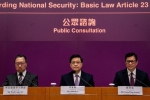By Jacqueline Hansen, Amnesty International’s Major Campaigns and Women’s Human Rights Campaigner.
“We can start with our future, our children, teach them love instead of hate… Violence, it’s easy to teach violence and hate. Turn that around and teach love, empathy, and we wouldn’t be here today grieving.”
– Glen Wilson, Father of CJ Morningstar Fowler, a 16-year-old member of the Gitanmaax First Nation, whose body was found outside Kamloops, British Columbia, in December 2012.
There is no simple or single solution to ending the alarmingly high rates of violence against Indigenous women in Canada. But the lack of an easy solution is not an excuse for complacency.
This week upwards of 500 people from across Canada—women and men, Indigenous and non-Indigenous, survivors of violence and their allies—came together in Edmonton, Alberta, for a national meeting on ending violence against Indigenous women in Canada. Participants rejected complacency and discussed ways in which to move toward concrete action to end the violence. I was honored to participate in this important meeting on behalf of Amnesty International.
Meeting participants recognized that the causes of violence are many and include the inter-generational impacts of the residential school system, poverty, a lack of adequate housing, the high percentage of Indigenous children in care, the growing number of youth and adults in the correctional system, the lack of adequate funding for women’s shelters…and the list goes on… There was talk of some of the creative and innovative Indigenous-led grassroots programs to prevent violence and provide services to victims of violence.
Some of the most challenging discussions surrounded the work of the newly created Parliamentary Committee tasked with studying the issue of violence against Indigenous women in Canada. What became clear is that how the Committee carries out its work is just as important as what it does. Requests were made to include elders at the core of the Committee’s work, and to make sure that the families of missing and murdered women and other survivors of violence are front and centre. Young people raised their voices, and asked that youth voices be part of the Committee’s work. Perhaps the clearest message is that people need time to speak, to grieve, to share, and to heal, and that this may need to take a different form and a different time commitment than is usual for other similar committees.
Committee members will need to provide a space for survivors of violence to raise their voices, and it will need to do so in a way that is attuned to the cultural practices of those it is listening to. The Committee will then need to look at how to take action based on the testimony it hears. To honor those who have died, and those who continue to live with grief, nothing less than a national action plan to combat violence is needed.
Survivors of violence shared their stories in Edmonton this week. From this sharing came strength and solidarity. In the words of Josie Nepinak, Executive Director of the Awo Taan Healing Lodge Society in Alberta, and a woman who has lost family members to violence, “I feel the love and the power of all of you. There are no easy answers but together we will keep this issue alive and move forward.”
We will keep moving forward, and Amnesty International will continue to stand with the families of those who have gone missing or been murdered, and other victims of violence, on the walk forward to justice.
Learn more about missing and murdered Indigenous women of Canada












